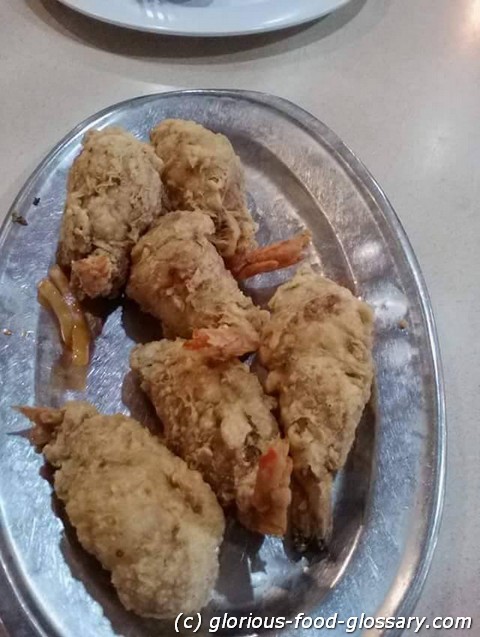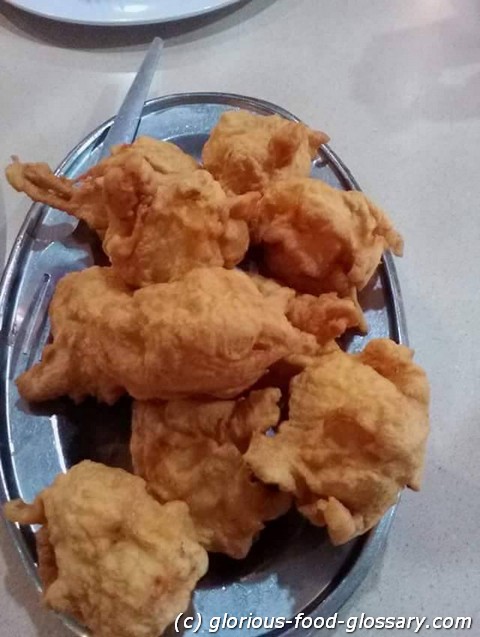In the food context, "Camaron Rebosado" is a popular Filipino dish consisting of deep-fried, battered shrimp. The name comes from Spanish, with "camarón" meaning shrimp and "rebosado" translating to battered or coated. This dish reflects the Spanish influence on Filipino cuisine, which has been enriched by over 300 years of Spanish colonization.
Preparation:
The preparation of Camaron Rebosado is relatively straightforward and similar to other battered and fried shrimp dishes found in various cuisines around the world. The shrimp are first peeled, leaving the tail intact, then marinated briefly in salt and pepper. They are dipped in a light batter made from flour, eggs, and sometimes a bit of water or milk, and then deep-fried in hot oil until they achieve a golden-brown perfection.
Key Features:
What sets Camaron Rebosado apart from similar fried shrimp dishes is often the batter's texture and the accompanying dips and sauces served with it. The batter for Camaron Rebosado is typically light and airy, giving the shrimp a crispy exterior without being overly heavy. It's commonly served with a sweet and sour dip or a chili mayonnaise, providing a delightful contrast in flavors.
Serving Suggestion:
Camaron Rebosado can be served as a main dish with rice or as part of a larger meal during special occasions and gatherings. It's also a popular appetizer or snack in Filipino restaurants and at festive events.
Nutritional Aspect:
Like all fried foods, Camaron Rebosado should be enjoyed in moderation due to the frying process increasing the fat and calorie content. However, shrimp themselves are a good source of high-quality protein and contain various vitamins and minerals.
Summary:
Camaron Rebosado is a tasty and visually appealing dish that highlights the cultural fusion in Filipino cuisine. It offers a crispy, light alternative to heavier fried foods and showcases the diversity and richness of flavors found in the Philippines.
--
Referred Picture:



